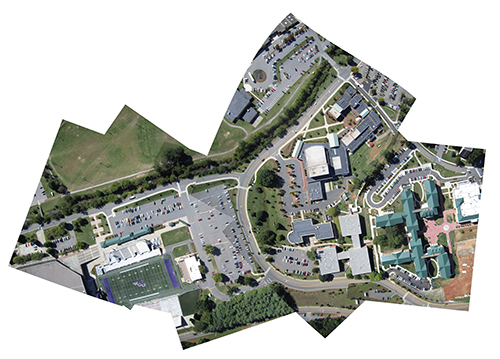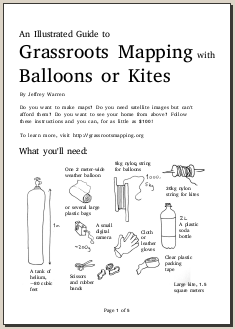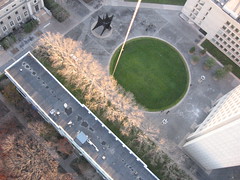Western Carolina University students map campus
December 12th, 2010 by Rachel PhippsMission
A group of students attending Western Carolina University, under the guidance of Adam Griffith, took on the project of mapping the campus using aerial photography in the fall of 2010. The project was initiated because there was concern about the Google Earth images that covered the campus and the surrounding Cullowhee area. Satellites for Google Earth images only pass by every couple weeks and our campus is experiencing lots of change through construction of new buildings and new facilities that Google Earth does not reflect. Also, the images are of extremely poor quality, and unless you are familiar with the campus it is difficult to discern cars and some buildings and small structures.. This is where we come in: our images taken only 1000 feet in the air are of much better quality and clarity than those in Google Earth, and when we complete the project we would love for Google to insert our images into their maps.
Process
The photographs were taken by suspending a camera inside the top of a 2 liter soda bottle and attaching this setup to a 250 gram balloon which was on 1000 feet of string (see materials picture d). We also used the same soda bottle-camera rigging attached to a kite to test which produced better photos (balloon). The balloon was pulled by hand by students on the ground and was navigated around campus, making sure to steer clear of tall buildings, trees, and other high objects that could snag the string. The camera was 14 megapixels and was set on continuous mode so it would take about a picture per second while up in the air. After several flights, we discovered what conditions were most suitable to our endeavor. The best photos were taken when the sun was out with no clouds in the sky. Lights winds were fine, but heavier winds caused the balloon to be jerked around, which would not allow the camera to focus. Advice for other mappers would be that no matter what equipment you use to take your aerial photos, make sure it is sturdy enough to withstand a fall! We experienced a malfunction where the balloon burst while we were pulling it in, and the camera struck pavement roughly. Luckily it survived with little to no damage.
Stitching
When first reviewing the outline of the project, stitching the photos together to form the map seemed like a simple enough task. We found out otherwise. The photos chosen had to be almost completely straight down and in focus on the area being photographed in order for them to be properly stitched together to fit Google Earth. Because the camera was in so much motion while in the air, there were very few pictures that turned out to be completely straight down. Due to this fact, we had to warp several photos when they were stitched and manually force them to mirror Google Earth. Stitching these photos turned out to be the most difficult and time consuming task for the whole project. However, our end product was such an improvement over Google Earth that the effort was worth it. Our photos had about 7cm resolution or 7 cm per pixel, which is a vast difference from Google Earth.
Tags: Adam, Balloon, camera, Carolina, Griffith, helium, University, Western















February 8th, 2011 at 6:08 am
[…] This post was mentioned on Twitter by Heath Nettles, Teresa Killian Tate. Teresa Killian Tate said: @WCU students used balloon, camera, 1,000 ft. string to create aerial campus map http://bit.ly/hcCArE […]
May 5th, 2011 at 7:45 am
Map completed! Thanks students and Stewart!
http://archive.publiclaboratory.org/wcu/2010-10-1-northcarolina-cullowhee-westerncarolinauniversity/tms/2010-10-1-northcarolina-cullowhee-westerncarolinauniversity.html